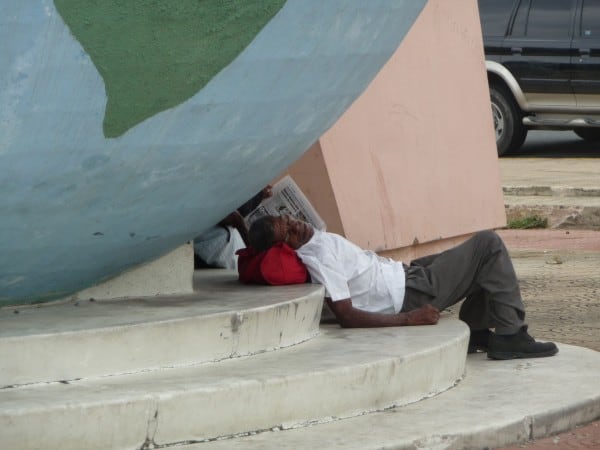In Genesis 16:13, Hagar calls the Lord “the God who sees me.” Basically, the story goes like this: Hagar is a slave woman for Sarai, Abraham’s wife. She becomes pregnant with Abraham’s child and is afraid of her mistress (even though having a baby by Hagar was Sarai’s idea in the first place), so she runs away.
When she’s sitting by a spring, God appears to her and asks her what she is doing. She is honest, and tells the Lord about the messy situation she’s in and why she’s run away. Ultimately, God tells her to go back and submit to her mistress, but he also promises to make a great nation from the son that she is carrying. In that moment, Hagar calls the Lord “El Roi,” or “the God who sees me.” In The Message paraphrase of the Bible, verse 13 says “She answered God by name, praying to the God who spoke to her, “You’re the God who sees me! Yes! He saw me; and then I saw Him!”
“You’re the God who sees me!
Yes! He saw me; and then I saw Him!”
I’ve read this story a few times in the last few years, and I’ve been struck by Hagar’s excitement that God saw her. I’ve always been told and just assumed that God could see me. I couldn’t see Him, but He could see me. If I had one shot at giving God a name, I might have said “the really strong God” or “the God who loves me” or even “the God who knows everything.” If I was going to choose one important characteristic of God, I certainly would never have chosen the fact that He could see me. Maybe this seems trivial to me because I’ve never really felt overlooked. I grew up in a white, middle-class household and was the oldest child in the house. On top of that, I grew up in the generation where every parent was positive that their child was the smartest, most creative, most talented human to ever walk the face of the planet. From a young age, I’ve been asserting myself and performing, making sure that I was seen.
You know what the down-side to that is? I don’t always see others. My culture, generation, and sinful nature have taught me that it’s a dog-eat-dog world out there and that I’ve got to look out for #1. Asserting oneself and making others aware of how important you are is a cultural value in my culture, and I’m so good at it that I can just plain overlook people that don’t seem important to me.
Example: on the first official night of our project, our group was walking across a road in Houston to the restaurant where we were going to eat dinner. As we approached an exit ramp from the highway, I looked ahead to see how far the restaurant was and looked right past a man who was standing there asking for money. A few minutes later, I noticed that two students were missing from our group and was honestly a little frustrated by the fact that they had wandered off. I turned around, though, and saw that they were standing next to the homeless man, and it looked like they were praying. When I asked later what they had been doing, they said that they wanted to hear his story, see if they could help, and pray with him. It was only during that conversation that I really thought about that man as a person with a story and emotions.
Not only does that story illustrate something that can be really sinful in me (the ability to simply overlook people) but it also illustrates something beautiful about the Destino students I spent the summer with. They see people. That is not simply to say that they have good eyesight, but that they notice people and care about their stories and lives.
After seeing this time and time again on our project, I began to see this as one of the ways that God has uniquely gifted a lot of our students in Destino. He’s given them eyes to see people that no one else sees. He’s given them hearts that care about the forgotten, the marginalized, and the poor. In this way, and others, I could see Jesus’ heart in a lot of our students. Because, after all, He is “the God who sees me.” And I think He’s using Destino students to display that to the hurting, tired, poor, and forgotten.
Casey is on staff with Destino in St. Louis, MO. Originally posted on her blog.
